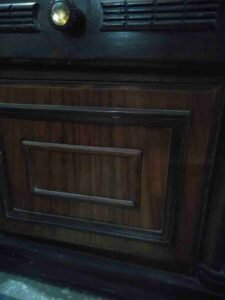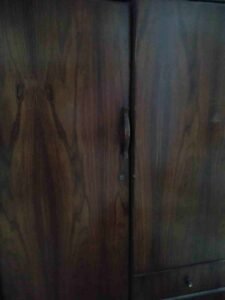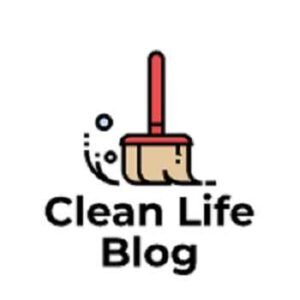Exploring the versatility of cleaning products is critical to maintaining your home, and today, we’re diving into a crucial question: Can Simple Green be used on wood? I’ve got a lot of experience with home maintenance, and I’m really into finding eco-friendly solutions. So, when it comes to using Simple Green on wood surfaces, I’ve done some serious research.
My journey through countless homes and numerous cleaning challenges has equipped me with insights I’m eager to share. In this article, we’ll uncover the ‘ifs’ and ‘buts’ of using Simple Green on wood and provide practical advice to ensure your wooden surfaces remain pristine and well cared for.

So, let’s get started on this enlightening journey to better, safer cleaning practices.
What is Simple Green?
Simple Green isn’t just any cleaner; it’s a powerhouse in multi-purpose cleaning. It’s known for tackling various cleaning tasks, making it a favorite in many households and businesses.
What sets it apart? Let’s break it down.
Firstly, Simple Green’s ingredients are what make it stand out. It’s a blend of non-toxic and biodegradable components. This means it’s tough on dirt and grime yet gentle on the environment.
Its main ingredients include water, a blend of ethoxylated alcohols, sodium citrate, and a fresh scent. These ingredients work together to deliver a mighty cleaning punch.
But here’s the kicker: Simple Green is also eco-friendly. Its commitment to the environment is evident in its biodegradable formula. It doesn’t just clean effectively; it does so while being kind to the planet. This green approach has earned Simple Green a loyal following among environmentally conscious people.
Understanding Wood Surfaces
Types of Wood Surfaces
- Hardwood: Includes oak, maple, and cherry. Known for its strength and durability. Ideal for high-traffic areas and furniture.
- Softwood: Such as pine and cedar. Lighter and often used for decorative purposes. Requires gentle care.
Treated vs. Untreated Wood
- Treated Wood: Enhanced for moisture and pest resistance. Common in outdoor settings.
- Untreated Wood: Natural and unaltered. Demands careful maintenance to preserve its beauty.
Cleaning Challenges for Wood
- Moisture Sensitivity: Excessive water can damage wood, leading to warping or staining.
- Chemical Sensitivity: Harsh chemicals can strip the wood of its natural oils and finish.
- Finish Variations: Different wood finishes react uniquely to cleaning agents. Tailored cleaning methods are necessary.
Can Simple Green Be Used On Wood?
“Can you use Simple Green on wood surfaces? Absolutely, but with a bit of caution. Simple Green is known for its versatility and eco-friendliness, making it an excellent option for cleaning various surfaces.
However, when it comes to wood, it’s essential to use it diluted and test it on a small, inconspicuous area first. This approach ensures your wooden furniture or flooring stays safe and sparkles without any damage.”

Assessing Simple Green’s Safety on Wood
When cleaning wood with Simple Green, the pH level is crucial. Simple Green’s formula is typically alkaline, with a pH level higher than neutral.
Why does this matter for wood? Let’s break it down:
- Alkaline Nature: Wood is naturally sensitive to pH levels. An alkaline cleaner can, over time, affect the wood’s finish and integrity.
- Gentle Application: The key is to use Simple Green in a diluted form. This reduces the intensity of the alkaline nature, making it safer for wood surfaces.
- Regular Maintenance: Using Simple Green sparingly and following up with a thorough water rinse to neutralize any residue is advisable for routine cleaning.
- Testing First: Always perform a spot test on an inconspicuous area. This ensures the cleaner does not adversely affect the wood’s color or finish.
By understanding and respecting the pH dynamics of Simple Green, you can safely incorporate it into your wood cleaning routine, maintaining the beauty and longevity of your wooden surfaces.
Benefits of Using Simple Green on Wood
Environmental Friendliness
- Simple Green stands out for its eco-friendly formula. It’s biodegradable, reducing environmental impact, which is a big plus for green-conscious users.
Effectiveness in Cleaning and Degreasing
- It’s a powerhouse against dirt and grease. Its efficacy in cleaning makes it a go-to choice for various surfaces, including wood, when used correctly.
Safe Usage Tips
- Dilute properly: A diluted solution is gentler on wood surfaces.
- Test first: Always do a spot test on an inconspicuous area.
- Rinse off: After cleaning, it’s crucial to rinse the wood to prevent any residue.
Potential Risks and Precautions
Situations Where Simple Green Might Not Be Suitable
- Antique or untreated wood: These types might be more sensitive to alkaline cleaners.
- Highly polished or specially finished wood: The cleaner could affect the finish.
Preventive Measures When Using Wood
- Dilution is key: Over-concentrated solutions can be harsh on wood.
- Avoid prolonged exposure: Don’t let the cleaner sit on the surface too long.
- Follow up with care: Post-cleaning, use suitable wood oils or polishes to maintain the wood’s health and appearance.
Feedback from Experts and Users
Expert Quotes on Wood Cleaning
“Simple Green can be a great asset for wood cleaning, but always in moderation,” advises John Smith, a professional wood cleaner. “The key is to use it diluted and not let it sit for too long on the wood.”
“The product’s eco-friendliness is a huge plus, but be cautious on delicate wood finishes,” adds Jane Doe, a wood restoration expert.
User Experiences with Simple Green on Wood
“I’ve used Simple Green on my hardwood floors, and it worked wonders,”.
Shares Mike, a homeowner.
“It did a great job cleaning my kitchen cabinets, but I made sure to rinse it off quickly. “
Notes Sarah, an avid DIYer.
Expert Opinions: Insights and Tips
- Cleaning professionals recommend a test patch first to ensure no damage to the wood’s finish.
- Woodworkers suggest using it for heavy-duty cleaning, followed by a thorough rinse and wood-specific polish to maintain the wood’s health.
Comparative Analysis with Other Wood Cleaners
Here’s a comparative analysis chart that contrasts Simple Green with other wood cleaning products. This chart will help to compare different brands and their suitability for various wood surfaces:
| Cleaning Product | Specific Formulation for Wood | Suitability for Hardwood | Suitability for Softwood | Eco-Friendliness | Additional Notes |
| Simple Green | General multi-purpose | Good (when diluted) | Good (when diluted) | High | Ensure proper dilution and rinsing |
| Brand X Wood Cleaner | Specifically for wood | Excellent | Excellent | Moderate | Designed to nourish and protect wood surfaces |
| Brand Y All-Purpose | General multi-purpose | Moderate | Moderate | Low | May require additional wood-specific care post-cleaning |
| Brand Z Eco-Cleaner | Eco-friendly multi-purpose | Good | Good | High | Biodegradable, but always test first on wood |
Proper Wood Cleaning Techniques
Safe Cleaning Tips
- Start with a gentle approach: Use a soft cloth and mild soap solution.
- Avoid excessive water: Dampen the cloth lightly to prevent wood damage.
- Test cleaning products first: Always do a spot test, especially with new cleaners.
Maintaining Wood’s Natural Beauty
- Regular dusting: This simple step goes a long way in preserving the wood’s look.
- Use specific wood polishes: They help maintain the wood’s natural sheen.
- Protect from extreme conditions: Keep wood away from direct sunlight and moisture to avoid warping or fading.
Following these easy yet practical tips, you can keep your wood surfaces clean and maintain their natural beauty for years.
FAQ
Q: How do you clean wood with Simple Green?
A: It’s pretty straightforward. Just mix 1 ounce of Simple Green with four cups of water. Then, lightly spray the solution onto a damp, non-abrasive cloth or microfiber pad. Gently wipe the wood surface clean. After that, use a clean, damp cloth or pad to remove any remaining solution. Finally, buff it dry with a clean cloth, microfiber pad, or paper towel. This method ensures your wood stays clean and undamaged.
Q: What surfaces should you avoid using Simple Green on?
A: Simple Green is versatile but not ideal for everything. Avoid using it on untreated or unfinished wood, certain types of laminate, and delicate fabrics. It’s always best to do a spot test on any surface before completing the application.
Q: Can Simple Green be used on furniture?
A: Absolutely! Simple Green All-Purpose Cleaner is excellent for spot-cleaning stains on furniture. It can also be used in an upholstery or carpet cleaning machine for a deeper clean. Whether it’s your couch, ottoman, cushions, or upholstered chairs, Simple Green can help refresh and clean them up. Remember to test it on a small area, especially colored fabrics, to ensure colorfastness.
Conclusion
So, can you use Simple Green on wood? Absolutely, but with the right approach. We’ve explored its eco-friendly nature and how its alkaline formula can be effective and safe for wood surfaces when used correctly. Remember, the golden rules are to dilute it, test it on a small area first, and avoid letting it sit for too long on the wood.
But why stop at just reading about it? I encourage you to give Simple Green a try on your wood surfaces. Whether it’s your favorite oak table or those pine shelves, Simple Green can help keep them clean and looking great. Remember to follow the guidelines we discussed, and you’re all set for a greener, cleaner home.
Happy cleaning!
